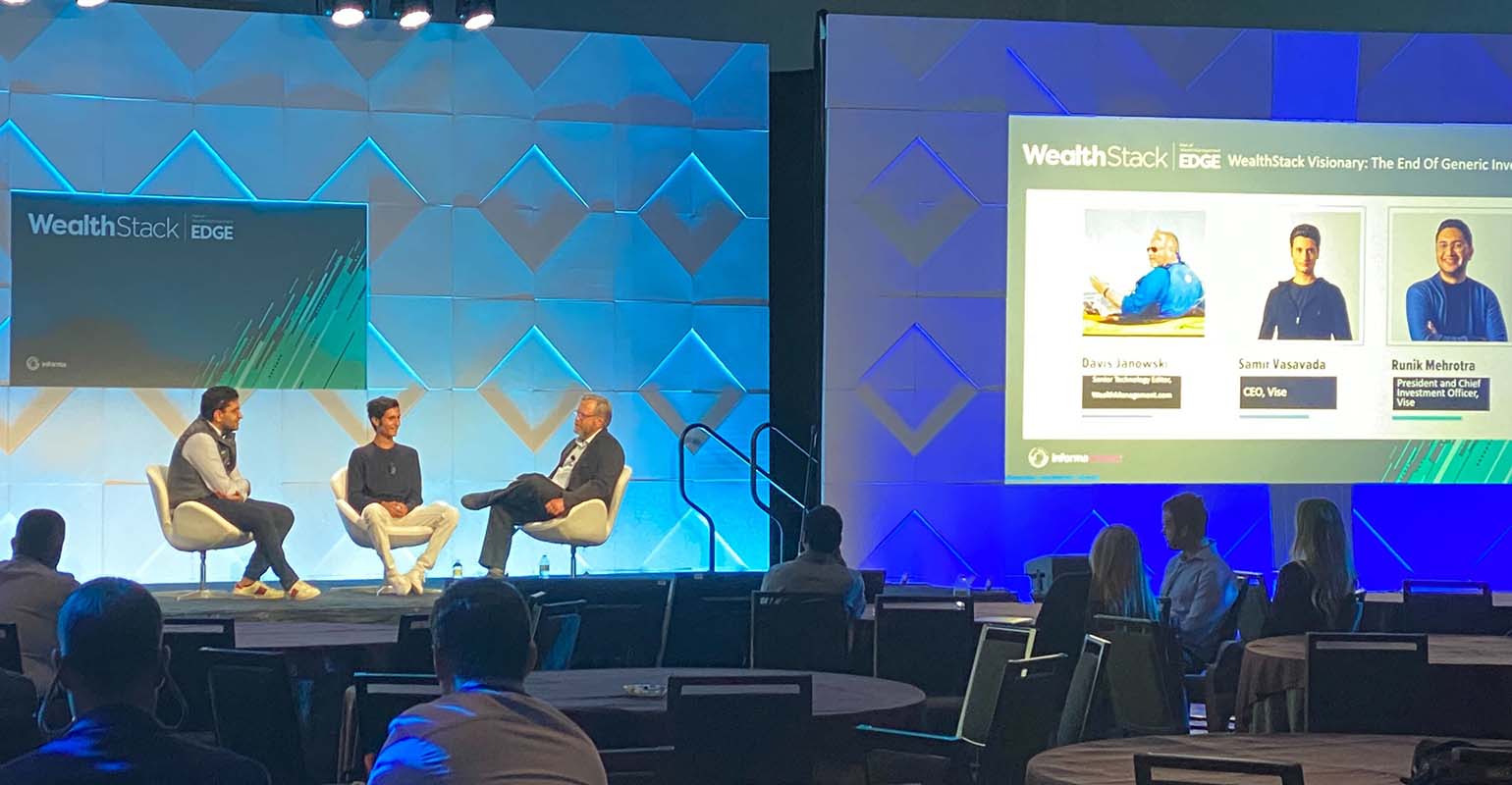
[ad_1]
At the same time many of their peers were excited at the prospect of legally drinking alcohol for the first time, Runik Mehrotra and Samir Vasavada were making decisions that would decide the ultimate fate of their startup.
The two started Vise—which is a largely automated asset management platform that employs advisor inputs and artificial intelligence to help them build and manage personalized portfolios for clients—in 2016 when they were 16.
A week ago the two, both now aged 22, wrote and published on Medium and LinkedIn a post talking about having to let half of their employees go to cut the startup’s burn rate and “re-found” the company.
I first met Vasavada and Mehrotra in person a few minutes prior to walking on stage with them at the 2022 WealthStack conference for a fireside chat. Neither seemed the least bit nervous or held back during our conversation and many of my unscripted questions.
I’ve spoken to them several times since and again for this column.
“It was mainly for founder friends, to say ‘hey we did this a year ago and it was a really hard thing to do, but if you must, you can do it too,” Vasavada said of their online post, readily admitting he and Mehrotra had over-hired and expanded the business too quickly.
“We had achieved product, market fit, and therefore we thought it was time to scale, scale, scale,” he said, citing one Silicon Valley’s mantras of growth. “Many of the founders we know had raised up their expense base too but were afraid to do cuts, ‘what is everyone going to think of me?’”
He cited again a quote he credited to Mehrotra from their post: “The only way out of it is through it.”
According to the two, they have cut Vise’s burn rate by 66% in addition to letting half of their 100 employees go, and are now spending less than $1 million a month. With about $80 million in capital remaining, they have runway for a few years ahead of them before needing to consider raising more money.
Looking back on my own experiences working for, and being let go, from two fintech startups, I felt compelled to ask them about how those let go responded and whether there was a lot of bitterness.
“Look, yes, it existed but it was not by design, though,” said Mehrotra, “Samir and I very much own up to it but unfortunately it happens—our attention is not to focus on it but to build the best product for advisors, our customers and be in the future as thoughtful as we can about each of the decisions we make around hiring.”
The two young men said they made a recent important hire they were not yet ready to talk publicly about, had been making sales and would be updating their SEC Form ADV within a month to reflect current assets, which again were rising.
That is another shift too—they let their entire salesforce go and were both again the chief sellers of their platform.
And in speaking to a couple of advisor clients of the platform, both continued to be satisfied, one saying he was unaware of the layoffs.
Herein is one of the lessons of the startup culture and lifestyle: It is not for the feint hearted. I experienced that first hand, twice. It can be exhilarating, even flattering, if you are recruited to a startup after years of wondering about what it would be like to work for one. However, you have to be thoughtful about what you are getting into; for me at one of those firms, it was to be at the beck and call of the founder, day or night. It can be long hours with your performance and even bonuses based largely, if not completely, on key performance indicators.
“Not everyone is a startup person and not everyone wants to move at that speed and cadence—and that is okay,” said Vasavada, so cultural fit is something both for employers and potential employees to think hard about during the hiring process. The two said, for example, some of the hires they made from big incumbent asset management firms were some of those that just did not end up being great cultural fits.
Any bitterness, layoffs and talk of budget aside, the two remain excited about what the future holds.
“We have exceptionally good tech talent on the engineering and investment side and R&D and product velocity are on pace,” Vasavada said.
It is clearly the product platform roadmap and things like developments in AI they hope to apply to it that they are most excited about.
“We are really excited about applying generative questions for advisors to use to say, for example “how will X affect my portfolios but in a way they can trust that response,” said Mehrotra.
There are challenges though.
“Hallucinations are a fear though, the trustworthiness of the responses, so, how do you build a generative model that is independently verifiable?” Mehrotra said.
Hallucinations in ChatGPT and other generative versions of AI are statements that seem convincing but that are actually wrong or misleading.
“This idea of letting advisors express their opinions on the market and then being able to show them [in client portfolios], I think we’ll start with open pre-trained source weights but build a lot of infrastructure that we’ll build ourselves,” said Vasavada.
In a nutshell, this means Vise will likely take open source AI technology and language models (a core component of generative AI) that they customize and build around for their own specific use cases.
Hearing the two talk passionately about continuing to build out the Vise platform reminded me of the same level passion I noted when I asked them about their desire to build things.
Vasavada had said at that point: “I’ve thought about starting a company since I was 5 when I got up in front of my whole class and said I want to be a construction worker and have a construction company.”
[ad_2]







